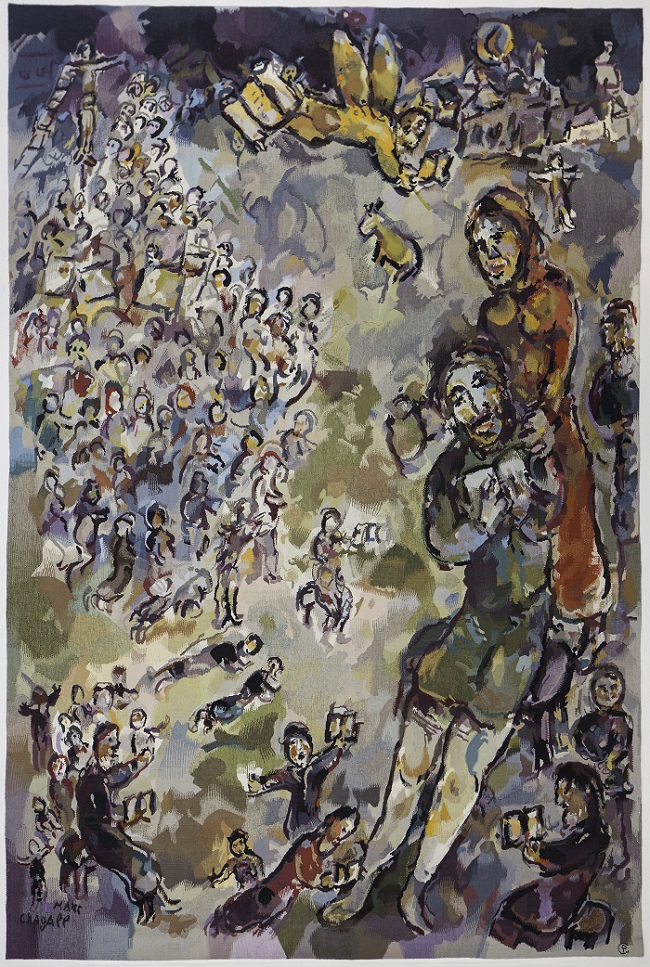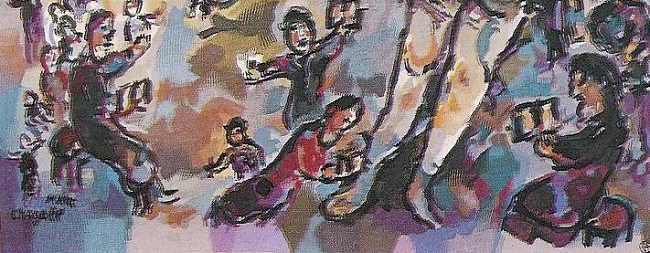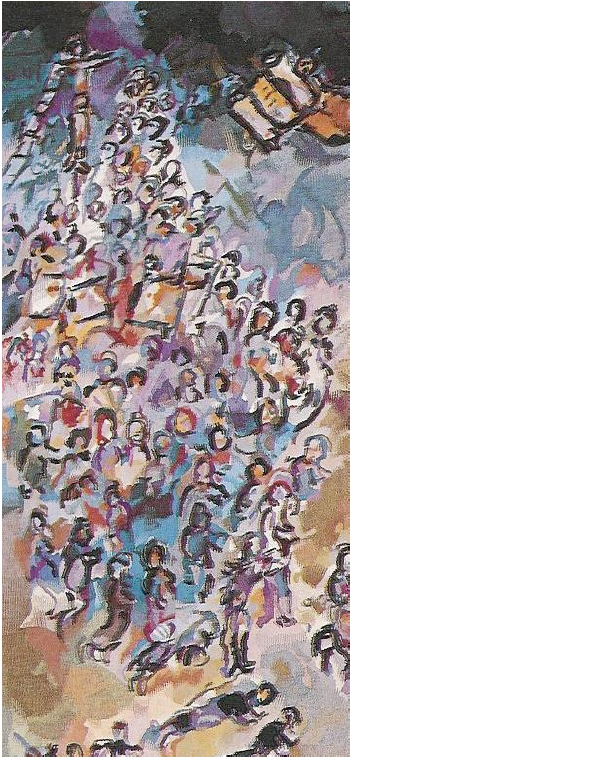Body
Please note that the hospital is not open to the public. Requests to view the tapestry will be considered on a case-by-case basis. Contact Meg Washburn (mwashburn@sralab.org) for more information.
The Chagall Tapestry at Shirley Ryan AbilityLab is one of three Marc Chagall artworks in the city of Chicago. The stained glass windows at the Art Institute of Chicago and the mosaic at the bank plaza at Monroe and Dearborn streets are the others.
The tapestry is titled “Job” after the biblical figure, who endured huge suffering and loss. He has been called, on more than one occasion, “the patron saint of people with disabilities.”
Body

Body
The tapestry is 11.5 feet wide and 13 feet high. It depicts scripture from the book of Job (Job 14:7): “For here is hope of a tree if it be cut down, that it will sprout again. And that the tender branch thereof will not cease.” This message is on the back of the piece and is the largest printed scripture verse in the city of Chicago.
In the tapestry, Job is on the right side. Behind him is his wife, dressed in red, who told him to “Curse God and Die” (Job 2:9). Below them are Job’s three friends (Eliphaz the Temanite, Bildad the Shuhite, and Zophar the Naamathite).
Body

Body
The corners of the tapestry tell Chagall’s story of faith. In the lower right is a person reading from the scriptures. In the lower left is a rabbi also reading from the scriptures. In the upper-left corner is a depiction of the crucifixion of Jesus. This configuration of Christ represents, for Chagall, the suffering of all mankind.
In the upper-right corner is a depiction of the city of Jerusalem. Marc Chagall felt that many people who go through the experience of functional loss rely on their faith to carry them through, and Jerusalem is the focal point of some faiths.
Between the two upper corners is the angel Gabriel, coming to bring good news to Job. Below Gabriel is a goat, representing the holiness of animals and nature.
The tapestry is dedicated to all disabled people of the world.
Body

Body
In the upper-left corner, Chagall made a gathering of people in the shape of an evergreen tree. In this grouping, one can see, either in a real or illusionary sense, various things used by people with functional impairments, such as a wheelchair, canes, various braces (orthoses) and artificial limbs (prostheses).
Since Chagall died before the weaving of the tapestry was complete, the weaver, Yvette Cauquil-Prince, took some license in changing the brilliant colors of purple and blue, characteristic of Chagall’s work, into the darker colors seen at the top.
The signature of Marc Chagall is in the lower-left corner and the signature mark of Yvette Cauquil-Prince is in the lower-right corner.
Once the tapestry was completed, policies of the French government complicated the release of the artwork. Approval for its shipment to Chicago took more than nine months. The Friends of the Chagall Tapestry, led by Vivian R. Jacobson, were finally able to convince the French government that it belonged at Shirley Ryan AbilityLab (then the Rehabilitation Institute of Chicago, or RIC) because this was an artwork dedicated to all disabled people in the world. The French government agreed and the tapestry was placed at RIC on June 20, 1986, until the move to the new Shirley Ryan AbilityLab hospital in 2017. The tapestry is now under glass in its new location, adjacent to the hospital's Spiritual Care department and Chapel.



